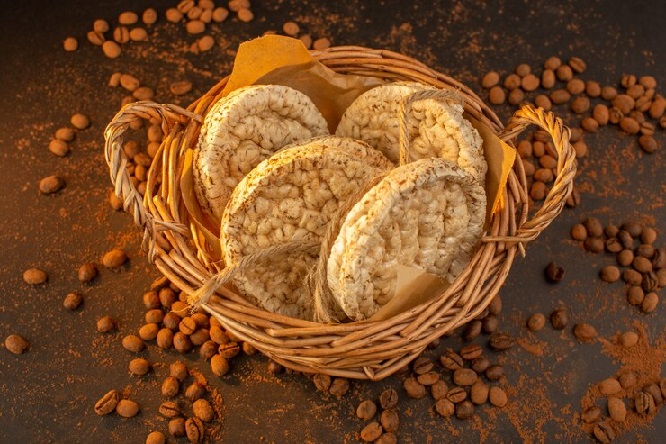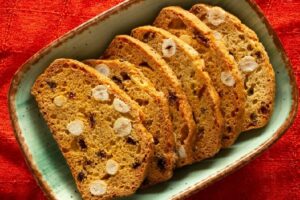
Anadama Bread
Anadama bread, with its soft texture and slightly sweet taste, has been a beloved staple in American households for generations. But what makes this bread so special? Join me as we delve into the delightful world of anadama bread and uncover its history, ingredients, baking process, and more!
Table of Contents
| Sr# | Headings |
|---|---|
| 1 | History of Anadama Bread |
| 2 | Ingredients |
| 3 | Baking Process |
| 4 | Unique Flavor |
| 5 | Serving Ideas |
| 6 | Health Benefits |
| 7 | Variations |
| 8 | Tips and Tricks |
| 9 | Common Mistakes |
| 10 | Storing |
| 11 | Conclusion |
| 12 | FAQs |
History of Anadama Bread
Legend has it that an irate husband named Anna, frustrated with his wife’s repetitive dinners of cornmeal mush, uttered the words “Anna, damn her!” as he mixed a batch of bread dough. Hence, the name “anadama” bread was born. Whether this tale is true or not, anadama bread originated in New England in the late 1800s and has since become a cherished tradition in many households.
Ingredients
Anadama bread typically consists of simple ingredients:
- Cornmeal: Provides a unique texture and flavor.
- Flour: All-purpose or bread flour forms the base of the dough.
- Yeast: Essential for leavening and rising.
- Molasses: Adds sweetness and richness to the bread.
- Water: Binds the ingredients together to form the dough.
- Salt: Enhances the flavor and regulates yeast activity.
Baking Process
Creating anadama bread is a labor of love, but the process is straightforward:
- Mixing: Combine the cornmeal, flour, yeast, molasses, water, and salt until a dough forms.
- Kneading: Knead the dough until it becomes smooth and elastic.
- Rising: Allow the dough to rise until it doubles in size.
- Shaping: Shape the dough into loaves and place them in greased pans.
- Baking: Bake the loaves in a preheated oven until golden brown and hollow-sounding when tapped on the bottom.
Unique Flavor

What sets anadama bread apart is its distinctive flavor profile. The combination of sweet molasses and hearty cornmeal creates a bread that is both slightly sweet and savory, making it perfect for any occasion.
Serving Ideas
Anadama bread is versatile and pairs well with various dishes:
- Toasted with Butter: Enjoy a slice of warm anadama bread slathered with butter for a simple yet satisfying snack.
- Sandwiches: Use anadama bread to make delicious sandwiches filled with your favorite ingredients.
- Soup or Stew Companion: Serve alongside soups or stews to soak up the flavorful broth.
Health Benefits
In addition to its delicious taste, anadama bread offers several health benefits:
- Rich in Fiber: The cornmeal in anadama bread provides dietary fiber, promoting digestive health.
- Source of Iron: Molasses, a key ingredient, is rich in iron, supporting healthy blood circulation.
- Complex Carbohydrates: The flour used in anadama bread supplies long-lasting energy, keeping you full and satisfied.
Variations
While traditional anadama bread is delightful on its own, you can customize it to suit your taste preferences:
- Add Nuts or Seeds: Incorporate chopped nuts or seeds for added texture and flavor.
- Experiment with Flours: Try using different types of flour, such as whole wheat or rye, for a unique twist.
- Sweet or Savory: Adjust the amount of molasses to control the sweetness of the bread or add herbs and spices for a savory version.
Tips and Tricks
Here are some tips to ensure success when baking anadama bread:
- Use Fresh Ingredients: Fresh flour, yeast, and molasses will yield the best results.
- Watch the Dough: Pay attention to the dough’s consistency and adjust the amount of flour or water as needed.
- Don’t Rush the Rising: Allow the dough enough time to rise properly for a light and fluffy texture.
Common Mistakes

Even experienced bakers can encounter challenges when making anadama bread:
- Dry Bread: Adding too much flour or baking the bread for too long can result in a dry texture.
- Flat Loaves: Insufficient rising time or expired yeast can cause the bread to come out flat.
- Burnt Crust: Be mindful of the baking time and temperature to prevent the crust from burning.
Storing
To prolong the freshness of your anadama bread:
- Room Temperature: Store the bread in a cool, dry place for up to 2-3 days.
- Refrigeration: For longer storage, wrap the bread tightly in plastic wrap and store it in the refrigerator for up to a week.
- Freezing: Anadama bread freezes well. Slice the loaf, wrap individual slices in plastic wrap, and freeze for up to three months.
Conclusion
In conclusion, anadama bread is more than just a tasty treat—it’s a symbol of tradition, craftsmanship, and comfort. Whether enjoyed on its own or as part of a meal, this humble bread continues to delight taste buds and bring people together.
FAQs
1. What makes anadama bread unique? Anadama bread stands out for its combination of cornmeal and molasses, which give it a slightly sweet and hearty flavor unlike any other bread.
2. Can I substitute molasses with another sweetener? While molasses is traditional, you can experiment with honey or maple syrup for a different flavor profile, though it may alter the taste slightly.
3. Why is it called anadama bread? The name “anadama” allegedly comes from a frustrated baker’s exclamation, “Anna, damn her!” while making the bread, though the true origin is debated.
4. Can I make anadama bread without yeast? While yeast is essential for the traditional recipe, you can explore yeast-free variations using baking powder or baking soda as leavening agents.
5. Is anadama bread gluten-free? Traditional anadama bread contains wheat flour and is not gluten-free. However, you can experiment with gluten-free flours to create a suitable alternative.

